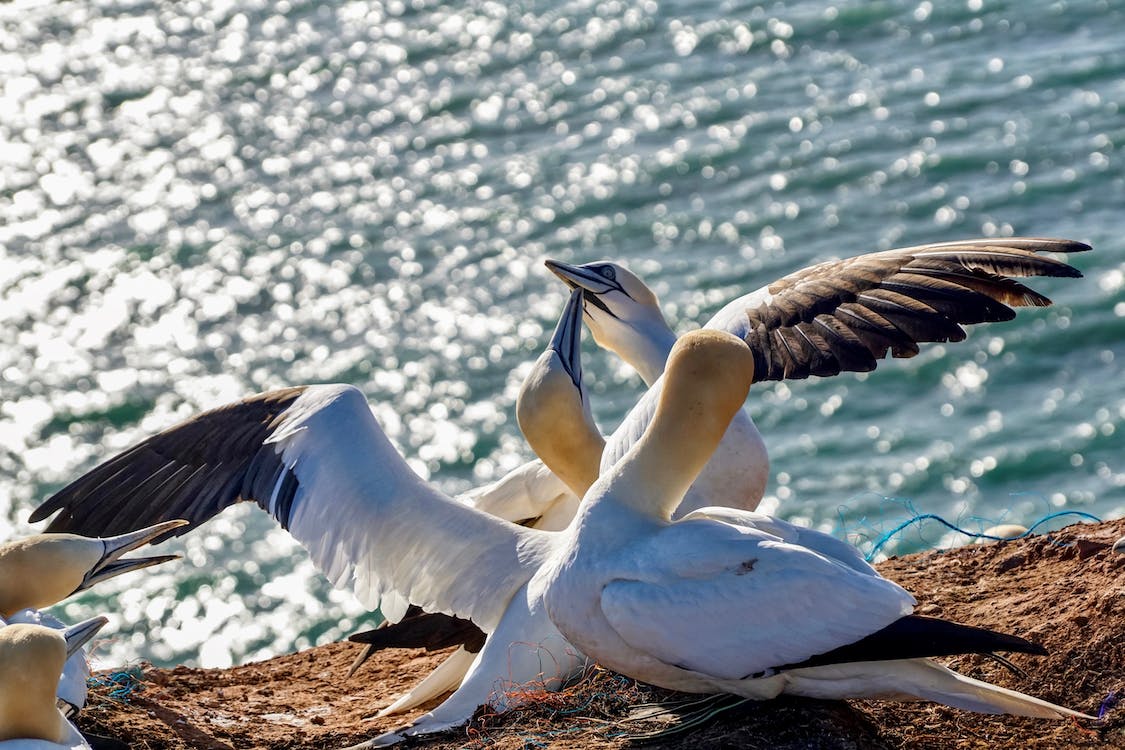It is a bird formerly considered as a subspecies of the Great Cormorant, though some authors still regard them so. However, it differs from the P. carbo through its white breast, which contrasts its darker upperpart. It is viewed as a waterbird, thriving in various freshwater, brackish, and marine environments. This bird is mostly sedentary in its African habitat.
Read further to know more about the White-breasted Cormorant.
What is a White-breasted Cormorant?
White-breasted Cormorant (Phalacrocorax lucidus) is closely related to the great cormorant and even dubbed as the species’ regional variant. What separates it from its cousin is its extensive white underpart in its plumage. However, it should not be confused with the endemic and small South Australian black-faced cormorant that is sometimes regarded as the white-breasted cormorant.
Its seven levels of classification are as follows:
Kingdom: Animalia
Phylum: Chordata
Class: Aves
Order: Suliformes
Family: Phalacrocoracidae
Genus: Phalacrocorax
Species: P. lucidus
White-breasted Cormorant Physical Description
White-breasted cormorants reach a length of 31 to 39 inches or 80 to 100 centimeters and weigh around 1.8 to 3.1 kilograms. Their wingspan can stretch from 41 to 58 inches or 121 to 149 centimeters.
White-breasted cormorants have a shiny dark brown plumage, except white cheeks, white patch on the thigh, white foreneck, and their distinct white breast. Meanwhile, their underwings are edged with pale buff feathers, producing a scaly effect.
Their head, crown, hindneck, and nape are all dark brown. They have bare skin on their faces, which is yellow on the lores, chin, and the cere. A yellow-line also surrounds their bluish-green eyes. White-breasted cormorants have long, slim, gray bills, with a duller lower mandible. Their upper mandibles have sharp curved tips. Meanwhile, their legs and huge webbed feet are black.
Where can they be spotted?
White-breasted Cormorants thrive in open water, including freshwater, brackish, and saline. They occur in shallow water along ocean shores. Inland, their species can be found along dams, rivers, lakes, where there is fish. These birds can also be seen in deltas, mangroves, swamps, estuaries, bays, and lagoons. These birds are in sub-Saharan Africa, from Nigeria to Sudan and South Africa.
Interesting Facts You Should Know About the White-breasted Cormorant
White-breasted Cormorants diets revolve primarily on fish, in which they will regurgitate its scales and bones. Other food items on its diet include eels, snakes, crustaceans, amphibians, crabs, frogs, and mollusks. They are excellent swimmers and will dive and pursue their prey underwater. These birds will grab their prey using their bills, which they will swallow immediately if it is small enough for them to do so. If they caught a larger prey, they would bring it back to shore before consuming it.
These birds are sedentary, and will only move to a new location if there are adverse changes in water levels. They are tenacious flyers, with both neck and head outstretched when flying, often low above the water.
White-breasted cormorants’ breeding season occurs throughout the year, peaking during September to December in some populations, while January and July for the others. They breed in colonies, not exceeding 50 pairs. The male is responsible for collecting nest materials, such as twigs, feathers, sticks, and other debris. On the other hand, the female takes charge of building the nest. They often nest on ledges, rocks, pylons, and other man-made structures.
The female will lay 3-4 eggs, which the parents jointly incubate for around 28-30 days, having six hours changeovers. After hatching, the chicks are naked but, they will grow their black down pretty quickly. Both parents tend to and feed the chicks with regurgitated food. The chicks will fledge in about 50 days and learn how to fly in around ten days. However, they will stay under parental care for another six weeks. Only about 45% of the chicks survive the first year. The main threats for their offsprings are starvation, predation, and falling from cliffs.
The White-breasted Cormorant is listed as Endangered in some areas, though it is not threatened worldwide. Common threats to their population are deaths due to feral dogs, collision to fishing lines, oil pollution, diseases, and fishermen who kill as they are viewed as competitors for fish.
WILDLIFE PARKS AND RESERVES WHERE THIS SPECIES IS FOUND:
BOTSWANA
SOUTH AFRICA
Kalahari Gemsbok National Park
NAMIBIA
ZAMBIA
ZIMBABWE
BOTSWANA BIRDS | SOUTH AFRICA BIRDS
NAMIBIA BIRDS | ZAMBIA BIRDS | ZIMBABWE BIRDS

